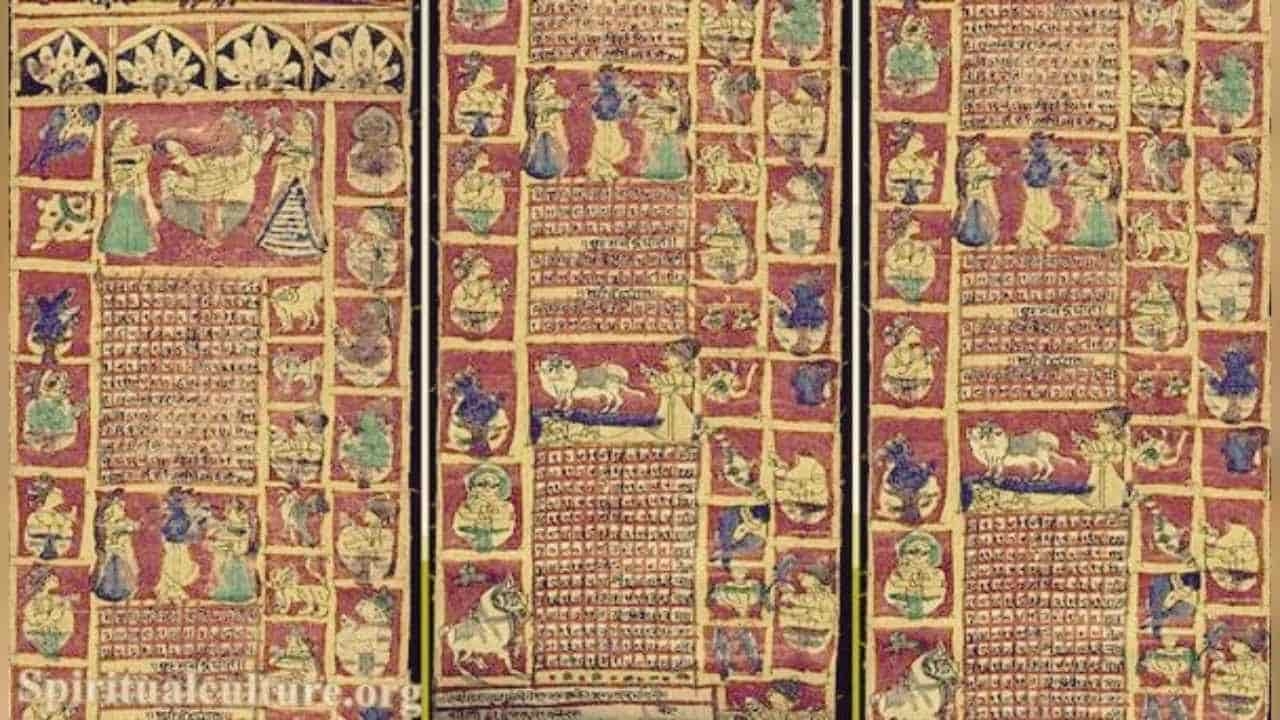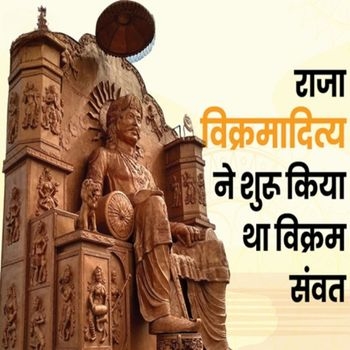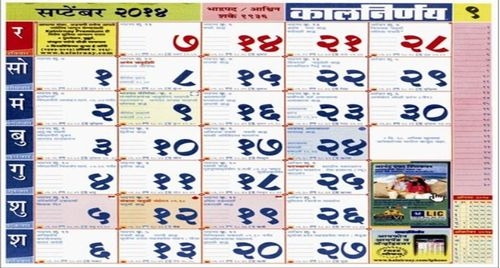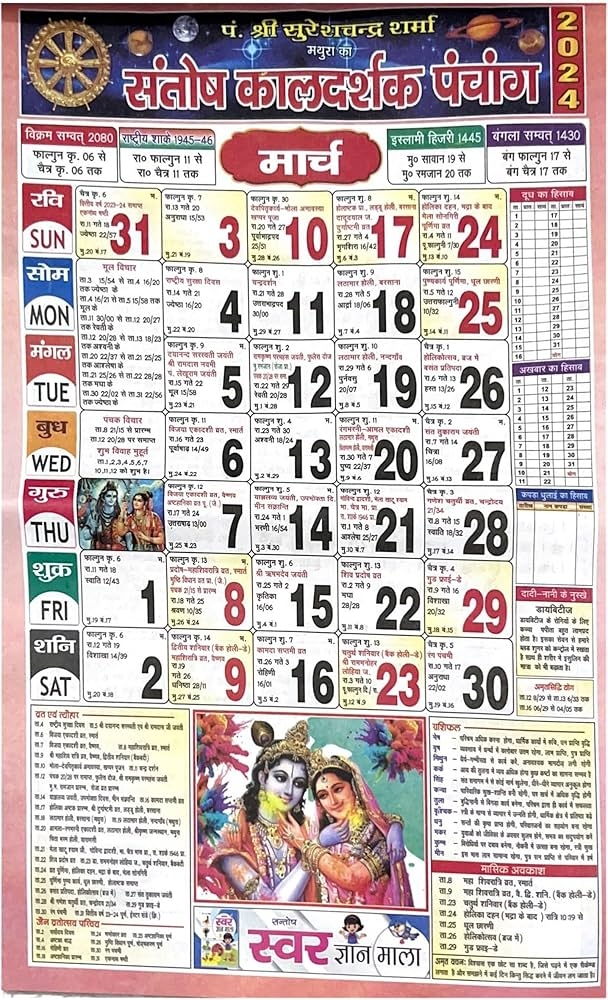History of Calendar System - 2025 or 2082: Which Year Are You Living In?
According to the Jain literature "Kalakacharya Katha," the lunisolar calendar known as Vikram Samvat was established by Gupta monarch King Chandragupta II, also known as Vikramaditya, in 57 BCE to mark his conquest of the Saka rulers.
Total Views |

As the CSIR correctly observed, "Calendars are based partly on conventions, which are man-made and have regional variations, and partly on science, which no one is allowed to violate."
I can travel to different years according to my belief system on the same day.
According to the Gregorian calendar, it is 2025; according to Vikram Samvat, it is 2082; according to the Saka calendar, it is 1947; and according to the Hijri calendar, it is 1445.
In Sanskrit, Panchang means calendar, and Samvat means year. The Christian calendar and months are well known to all Bharatiyas, but how many of us are aware of our Panchang?
The history of Bharatiya astronomical, technological, and cultural progress dates back to the Indus Valley Civilization.
It predates Western calculations by measuring time precisely based on the positions of planets and nakshatras without using sophisticated instruments.
The two primary Panchangs that Bharatiyas created using the same information are Saka Era and Vikram Samvat.
The five factors that the Panchang considers—Tithi (lunar day), Nakshatra (lunar constellation), Vaara (day of the week), Karana (half lunar day), and Yoga (astrological conjunction)—give it its name.

According to the Jain literature "Kalakacharya Katha," the lunisolar calendar known as Vikram Samvat was established by Gupta monarch King Chandragupta II, also known as Vikramaditya, in 57 BCE to mark his conquest of the Saka rulers.

According to Shivanath Zakhandi's study of Bharatiya astrology, "Bharatiya Jyotisha," months were lunar throughout the Rig Vedic period, but a year was luni-solar: "1 lunar month = 29 days, 12 hours, 44 minutes," totaling 354 days, 8 hours, and 48 minutes for 12 such months. To align it with the solar year, an additional month, Adhik Mas, is added every two and a half years.

Chaitra month marks the beginning of the new year in both Panchangs. The new year of Saka Samvat begins on March 22, while Vikram Samvat begins on March 15.

In 78 CE, a different Panchang, known as Saka Samvat (based on the lunar calendar), was adopted.
In Bharat, it serves as the official unified calendar of Bharat alongside the Gregorian calendar and has 365 days in a year. Its origin has several theories.
Some believe it was founded by the Saka tribe, who were of Scythian ancestry, migrated to West Bharat, and were referred to as "Shaka" in Patanjali's Mahabhasya.
King Chastana of Saka reportedly created this calendar in Mathura to commemorate the year he took the throne.
Another theory suggests that the Kushana ruler Kanishka established Saka Samvat to mark his accession to the throne and victory against the Shakas.
Some historians argue that King Salivahana of the Satavahana dynasty initiated this era to commemorate his military victory.
This is also supported by the work "Udbhatakavya" by Somraj and historian Dineshchandra Sircar.

Naming Conventions in Panchang
1. Weekdays
Sunday: Ravivaar (Sun)
Monday: Somvar (Moon)
Tuesday: Mangalvaar (Mars)
Wednesday: Budhvaar (Mercury)
Thursday: Guruvar (Jupiter)
Friday: Shukravar (Venus)
Saturday: Shanivar (Saturn)
2. Seasons
Vasant: Spring
Grishma: Summer
Varsha: Rainy
Sharad: Fall
Hemant: Early Winter
Shishir: Winter
3. Months
Chaitra: March–April
Vaisakha: April–May
Jyeshtha: May–June
Ashadha: June–July
Shravana: July–August
Bhadrapada: August–September
Ashvin: September–October
Kartika: October–November
Agrahayana: November–December
Pausha: December–January
Magha: January–February
Phalguna: February–March
Panchang plays a crucial role in daily activities such as selecting muhurats for weddings, travel, business startups, housewarming ceremonies, etc.

It also determines the dates of Hindu festivals like Diwali, Holi, temple rituals, and Navratri.
We are a part of the cosmos and share a deep connection with nature.
Harmony is a reflection of the environment, which in turn influences us positively.
For example, Yoga is not just a physical exercise but refers to specific astrological elements.
Based on various possible combinations of the Sun and Moon, there are a total of 27 Yogas, each with its own name and distinct qualities.
Vishkumbha, Priti, Ayushman, Saubhagya, Shobhana, Atiganda, and Sukarma are a few well-known yogas.
Each Yoga carries a unique meaning and astrological significance. It is believed that the prevailing Yoga at any given time influences different aspects of life, including relationships, spiritual growth, wealth, and health.
Following these traditional practices fosters harmony, stability, and peace in our lives.
Article by

Jyoti Singh Jat
Younginker
Student at the Department of Educational Studies,
Central University of Jammu.
Student at the Department of Educational Studies,
Central University of Jammu.

